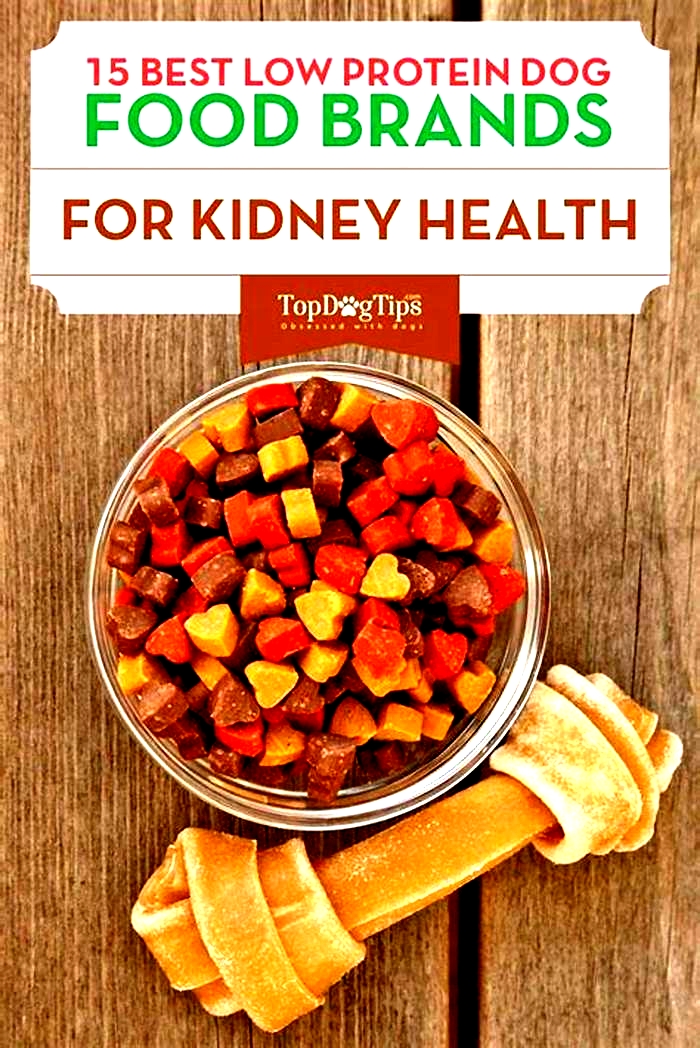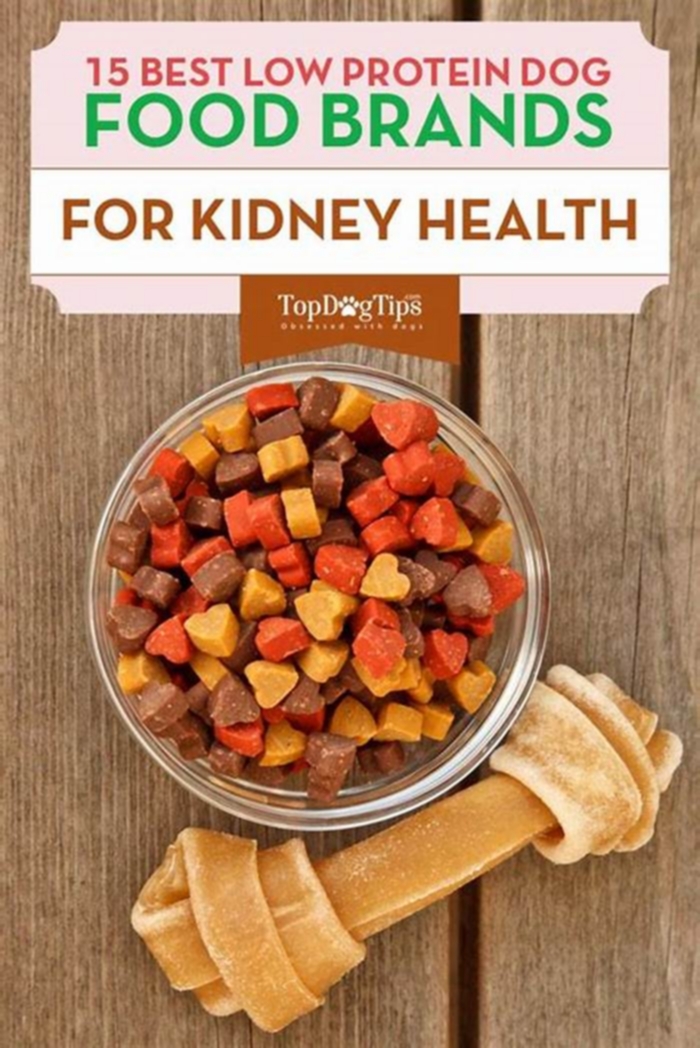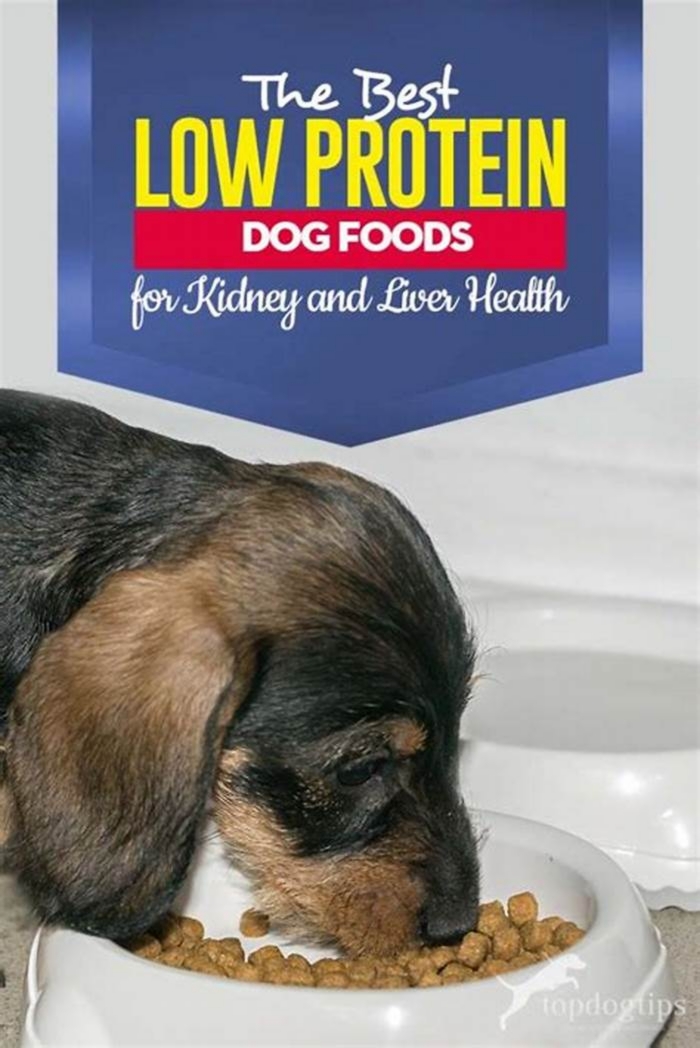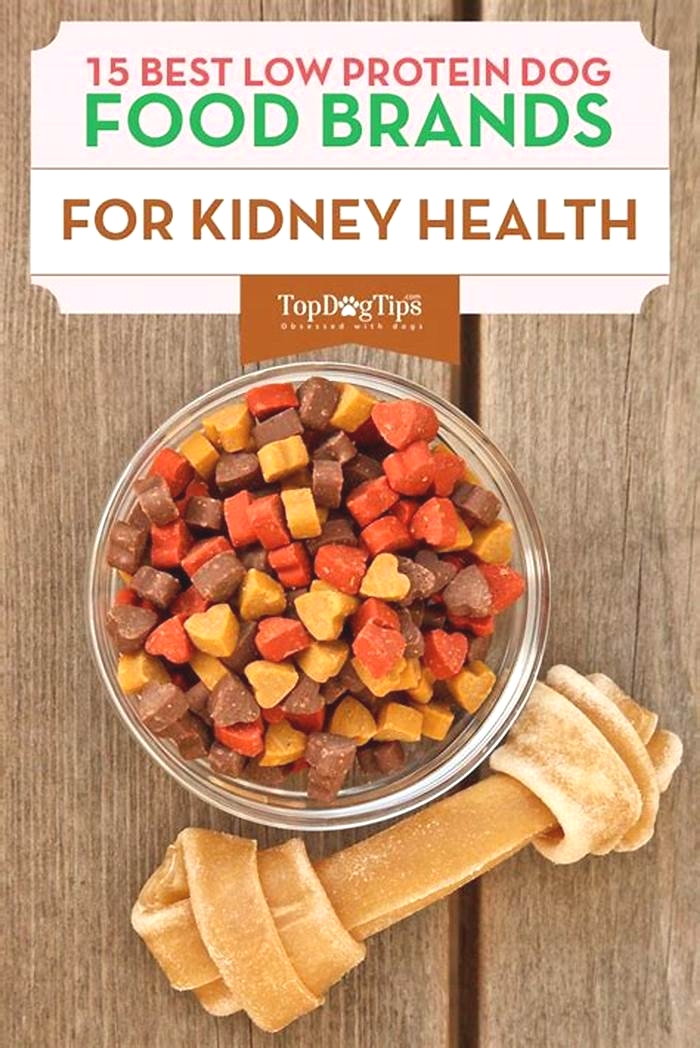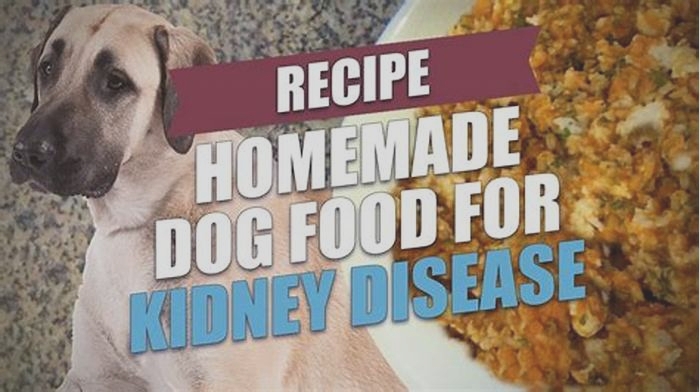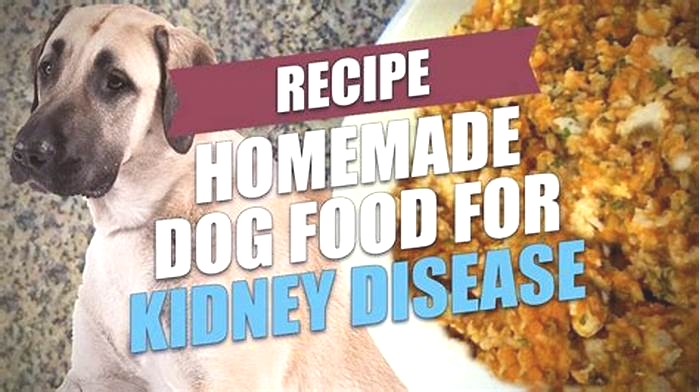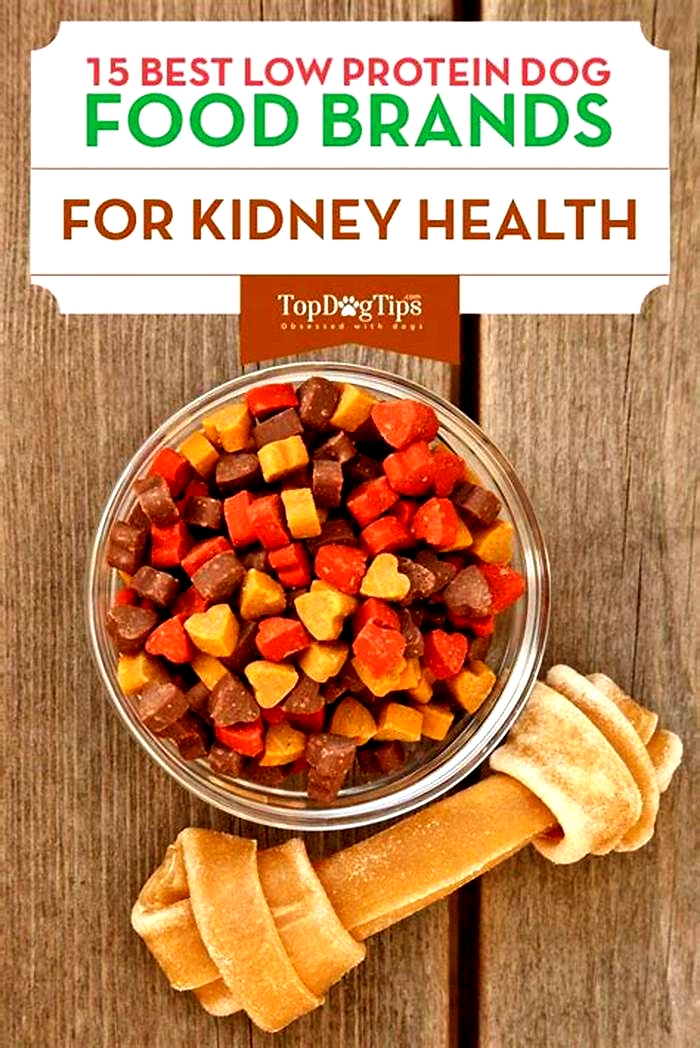low protein kidney diet for dogs

Low-Protein Diet for Dogs: The Ultimate Guide
Once the vet informs you that you need to change to a low-protein diet for dogs, the questions start popping up: what is a low-protein food, where can you buy it, will your dog like it, how low in protein the diet should be, and more.
Here's everything you should know about a low-protein diet for dogs.
When is A Low-Protein Diet for Dogs Needed?
It is not up to you to decide whether your dog needs a low protein diet. If done improperly, decreasing protein intake can do a lot of harm to your dog.
Switch your dog to a low-protein diet only if your vet prescribes it.
A low-protein diet for dogs is often recommended when pets have a medical condition that affects the functions of their liver or kidneysor if they have a particular type of bladder stone.
Studies have shown that this type of diet improves the condition, makes dogs feel less lethargic, and even extends the lifespan of terminally ill dogs (1, 2).
The liver and kidneys contribute to metabolizing proteins in the dog's body.
When either of these organs is already under significant strain due to other dysfunction (e.g., liver disease, kidney disease), decreasing the amount of protein they need to process will prevent further complications, such as kidney failure (3).
This diet change may be permanent, especially if your pet has a chronic kidney or liver illness. It may also be temporary, such as in the case of bladder stones.
With the latter, you'll switch away from a low-protein diet and back to a normal diet when your dog gets rid of the stones (4, 5).
Research has shown that feeding a low protein dog food diet can lead to losing less protein through kidneys with dysfunction (6). Therefore, in these particular cases, less protein in the diet can paradoxically mean more protein supplied to your dog's body (7).
What Are the Side Effects of a Low-Protein Diet for Dogs?
Never decrease your dog's protein intake by yourself. While a low protein diet for dogs can be beneficial in certain cases, this dietary change needs to be taken extremely seriously and approached with caution.
Only a veterinarian can recommend your dog this type of diet, and they will give you the necessary advice on how to stick to it, a specific timeline, and even prescribe the appropriate food for your dog.
A low protein diet can have side effects such as losing weight and muscle mass, vitamin deficiency, and malnutrition all of which lead to further health problems (8).
If you choose to feed your dog a low-protein diet on your own, you risk disregarding the other important nutrients that need to be compensated for.
This is why only a vet or canine nutritionist can design a low-protein diet for your individual dog.
Low protein diets are also known to weaken a dog's immune system and cause mood swings, exhaustion, muscle trembling, and melancholy.
These symptoms will be worse in the dogs that dont actually need to be put on a low protein diet.
How Low in Protein Can a Low-Protein Diet for Dogs Be?
If you look, you will find several low-protein dog food brands available for purchase. However, not every low-protein dog food brand will fit your pet's requirements.
To understand the vets recommendation, you need to know how much protein your dog consumes daily.
Look at the dog food label. The protein content is expressed in percentages on a dry matter basis.
Recommended protein intake for an adult dog should be 18%, and for a puppy, this number is 28%.
Working and athletic dogs should consume about 25% of protein, while lactating dogs will need 28%.
Regular dog foods which you normally buy will contain around 20-25% of protein. Low-protein dog foods will vary in percentage, but you will usually halve the amount.
| Type/Growth Stage | Protein % | Fat % |
|---|---|---|
| Puppy | 28% | 17% |
| Adult dog | 18% | 9-15% |
| Performance dog | 25% | 20% |
| Racing sled dog | 35% | 50% |
| Lactating dog | 28% | 17% |
What Should You Feed Your Pet on a Low-Protein Diet for Dogs?
You have three options to agree with your veterinarian on in terms of the new diet:
- Buy a prescription dog food brand for a specific health condition (costly)
- Make low-protein homemade dog food meals (somewhat expensive)
- Buy regular dog food brands that are lower in protein (average priced)
The first option can be the easiest and most appropriate. Your veterinarian prescribes a particulardog food brand designed for the exact health issue that your dog has.
You'll need that prescription to buy the food, which you can sometimes purchase at the vet's clinic.
Prescription foods are the most expensive on the market, and they're also harder to find.
The second option is less expensive than prescription foods, but it's time-consuming. You need to design each meal with specific ingredients your dog requires while at the same time avoiding protein-rich foods.
You need to be extremely precise and follow instructions for a tee. Every homemade low-protein dog food recipe needs to be approved by your vet.
The third option is simply buying dog food from pet stores or online the way you normally do, except you'll need to pick from foods labeled Low Protein.
While this is the least expensive and time-consuming option among the three, it's not always possible to find the kind of low-protein dog food that fits your pet's current requirements.
Ask your vet which regular dog food brands they believe can be a good fit for your pooch.
Note: Make sure that you're veterinarian doesn't push for prescription dog foods only without explanation. There is no reason you cannot feed a dog a homemade diet as long as the vet has approved every recipe and you stay precise with ingredients. Always confirm whether you can buy a regular dog food brand instead of prescription foods, and if the veterinarian says it's not an option, ask them to explain why that is the case.
How to Make a Homemade Low-Protein Diet for Dogs
You can follow a low-protein diet for dogs with homemade recipes as long as your vet has approved them (here's an example recipe).
Before you decide to do that, you must understand the intricacies of such a dietary approach.


First, keep in mind is that all proteins are not the same. They are ranked based on the dog's body's ability to utilize a specific protein source (9).
This is the part that's vital to dogs on a low protein diet. A protein's quality is referred to as biological value.
Chicken Eggs have the highest biological value for protein (94/100 BV) among dog foods.
Thus, eggs present the point of reference for all other types of foods to be compared to, and it's the most common ingredient in a low protein diet for dogs (10).
Below are the rest of the foods ranked from the highest BV for protein:
Buckwheat: 90 BVCow's milk: 90 BVCheese: 84 BVQuinoa: 83 BVRice: 83 BVFish: 76 BVBeef: 74.3 BV
Eggs, fish, red meat, and poultry protein are good quality sources with decent BV (11).
For a homemade low protein diet for dogs, you need to account for this to accommodate your dogs needs.
While soy and corn are also rich in usable protein, you should avoid them as they aren't necessarily the best food items for a canine.
When you're designing your pup's meals, you should always try to hit as many birds with as few stones, so seek out foods with a specific protein amount and BV and those that are also saturated with omega-3 fatty acids, vitamins, and minerals.
Additionally, how much protein your dog needs will also depend on their breed, daily life, habits, health history, and age, as well as the exact health issue they're currently dealing with.
This is why it's important for a low protein diet to be tailor-made by your vet and worked out specifically for your individual pet.
Best Low-Protein Dog Food Brands
Below are some of the best low-protein dog food brands you can buy instead of prescription dog food or homemade meals.
However, it would help if you were certain that the percentage of protein dry matter basis fits the needs of your individual dog ask your veterinarian about each brand you're considering.
Sticking To The New Diet of Low-Protein
If your dog is used to eating a particular type of food, it is normal that they will find the change difficult at first.
Some owners find it easier to mix low protein dry dog food with a little bit of low protein wet dog food. It's more expensive but makes the switch easier.
Generally, when switching to a low protein diet for picky dogs, homemade foods are likely to have the best success ratio.
When you change your dogs diet, your main task will be to stick to it. Don't forget about dog treats you give your pup between meals they can be high in protein.
Make a plan for your dogs meals and stick to that plan. There can be no more giving into your dog's puppy eyes.
If you are consistent in what you are offering them in the beginning, it will be easier for both of you in the future to control your pet's protein intake.
Disclosure: Wemay earn affiliate commissions at no cost to you from the links on this page. This did notaffect our assessment of products.Read more hereand findfull disclosure here.
Want to share this?

Dietary Guidelines for Dogs with Chronic Kidney Disease (CKD)
To provide the best experiences, we use technologies like cookies to store and/or access device information. Consenting to these technologies will allow us to process data such as browsing behavior or unique IDs on this site. Not consenting or withdrawing consent, may adversely affect certain features and functions.
The technical storage or access is strictly necessary for the legitimate purpose of enabling the use of a specific service explicitly requested by the subscriber or user, or for the sole purpose of carrying out the transmission of a communication over an electronic communications network.
The technical storage or access is necessary for the legitimate purpose of storing preferences that are not requested by the subscriber or user.
The technical storage or access that is used exclusively for statistical purposes.The technical storage or access that is used exclusively for anonymous statistical purposes. Without a subpoena, voluntary compliance on the part of your Internet Service Provider, or additional records from a third party, information stored or retrieved for this purpose alone cannot usually be used to identify you.
The technical storage or access is required to create user profiles to send advertising, or to track the user on a website or across several websites for similar marketing purposes.
What To Feed a Dog With Kidney Disease
Nutrition plays a big role in the management of dogs with kidney disease. Because dogs with kidney disease usually arent feeling well, the first step is often to merely get your dog to eat anything.
Kidney disease can make dogs nauseated, and they can also develop ulcers in their mouth or stomach, which makes eating painful. A feeding tube may be necessary to get dogs with severe kidney disease the nutrition they need.
Once your dogs condition is more stable, you can turn your attention to providing more optimized nutrition. Kidney diets for dogs have to tick a lot of boxes. Heres a guide that explains nutritional needs and what to feed a dog with kidney disease.
What To Look For in a Kidney Diet for Dogs
Kidney diets for dogs are significantly different from regular dog foods. However, no single kidney diet is going to be best for every dog throughout the rest of their life.
For example, a dog in the early stages of kidney disease could thrive on a kidney diet with more protein, but as their disease progresses, a diet lower in protein and phosphorus might better control their symptoms.
As a rule of thumb, good kidney diets for dogs tend to have anutrient profilethat looks like this:
Nutrient | Grams/1000 kcal |
Protein | 31-41 |
Phosphorus | 0.5-0.8 |
Sodium | 0.4-1.2 |
EPA and DHA | 0.4-1.2 |
Unfortunately, it can be hard tofind this information on dog food labelsor on pet food manufacturers websites. If you are having trouble getting the numbers, your veterinarian can help you pick a good kidney diet based on your dogs needs.
Here are several important elements to look for in kidney diets for dogs:
Taste
The most important characteristic of a kidney diet for dogs can be the hardest to achieve: It has to be delicious! Thats because the metabolic and physical changes associated with kidney disease can lessen a dogs appetite.
To counteract this effect, kidney diets need to smell and taste great. After all, a kidney diet that isnt eaten isnt going to do a dog any good. Kidney diets should also be calorie- and nutrient-dense, so dogs can eat less and still get a lot of nutrition.
Hydration and Water Content
Kidney diets should also contain a lot of water. Dogs with kidney disease struggle to maintain their hydration. All dogs always need to have access to bowls of fresh clean water, but a diet that has high water content is a great way to boost a pets water intake when they have kidney disease.
Wet foods are almost always a better option for dogs with kidney disease than dry foods. If you are feeding your dog kibble, ask your veterinarian about adding water to the dry food or other ways you can supplement their water intake.
It's also important to keep an eye on the sodium levels in kidney diets for dogs. Too much sodium increases the chances that your dog will becomedehydrated.
The Right Amount of the Right Protein
Next comes the balancing act that is protein. Dogs with kidney disease need protein, but not too much. The breakdown products of protein digestion are responsible, in large part, for making dogs with kidney disease feel yucky.
The goal is to feed just enough protein to meet a dogs needs for muscle maintenance, immune function, and the other vital jobs proteins have in the bodybut not to feed too much more. Extra protein will only be turned into calories that can be more safely provided by carbohydrates and fats.
Protein quality is also important. Proteins should be highly digestible and supply all the essential amino acids dogs need.
Low Phosphorus Levels
Theres a close relationship between protein intake and blood phosphorus levels. Dogs with kidney disease gradually lose the ability to excrete phosphorus in their urine, so it backs up in the bloodstream. Reducing phosphorus intake has been shown to slow the progression of kidney disease in dogs and increase their lifespan.
An important way to reduce phosphorus levels in the diets of dogs with kidney disease is to not overfeed protein and to ensure thatproteins relatively low in phosphorusare included in the diet. Plant-based sources of protein tend to be lower in phosphorus than animal-based sources of protein.
Supplements
Nutritional supplements can also help dogs with kidney disease. Supplements often included in kidney diets for dogs include:
Omega-3fatty acids:eicosapentaenoicacid (EPA) and docosahexaenoic acid (DHA), which can reduce inflammation in the bodyincluding in the kidneysand possibly improve kidney function
Antioxidants,which neutralize free radicals that can further damage the kidneys
Fermentable fiber,which helps get rid of protein digestion waste products in poop. This allows dogs to eat more protein than they might be able to otherwise.
Prescription Kidney Diets vs. Homemade Kidney Diets for Dogs
What abouthomemade kidney diets for dogs? Astudypublished in 2012 showed how hard it is to find nutritionally complete and balanced kidney diet recipes in books and online. Of the 39 recipes evaluated, none met all the National Research Councils recommended nutrient allowances for adult dogs.
In contrast, prescription kidney diets produced by reputable dog food manufacturers undergo testing to ensure they are safe for long-term feeding and have a positive effect on a dogs health.
How To Cook for Dogs With Kidney Disease
One big benefit of homemade kidney diets, however, is taste. If your dog simply wont eat anything else, a homemade kidney diet is worth considering. To avoid nutrient deficiencies or excesses, make sure a veterinary nutritionist or a service likeBalanceIT, which requires veterinarian approval, is involved in formulating recipes for your dog.
Common Prescription Kidney Diets for Dogs
After a dog has been diagnosed with kidney disease and their condition is stabilized, veterinarians typically recommend switching over to a prescription kidney diet. Your veterinarian may have recommended a particular food based on the details of your dogs case. Here are three popular options:
Hill's Prescription Diet k/d Kidney Careis available in wet and dry formulations and different flavors:
How To Transition Your Dog to a Kidney Diet
special attention to how you make the transition. Do notchange your dogs foodwhile they are still nauseated or feeling bad. They may associate their symptoms with their new food and refuse to eat it.
Once your dog has a good appetite, start making the switch very slowly. Give them lots of time to get used to the new flavors, textures, and ingredients. This reduces the chance of food refusal and lets your dogs digestive system adapt.
Here is a timetable for taking two weeks to switch your dog to a new diet:
Days 1 and 2:Mix 5% of the new food in with 95% of the old food
Days 3 and 4:Mix 10% of the new food in with 90% of the old food
Days 5 and 6:Mix 20% of the new food in with 80% of the old food
Days 7 and 8:Mix 40% of the new food in with 60% of the old food
Days 9 and 10:Mix 60% of the new food in with 40% of the old food
Days 11 and 12:Mix 80% of the new food in with 20% of the old food
Days 13 and 14:Mix 90% of the new food in with 10% of the old food
Day 15:Try 100% of the new food
If at any point your dog turns their nose up at their food or develops signs of digestive upset, move back a step in the timetable and proceed more slowly.
Signs to Watch for After Starting Your Dog on a Kidney Diet
Dont give up if you initially have trouble switching your dog to a kidney diet. Call your veterinarian if your dog wont eat the recommended food. They can help by:
Recommending an appropriate food topper to make the food more appealing. Avoid products that are high in phosphorus and salt.
Prescribing medications to reduce nausea, stomach inflammation, ulcers, or other symptoms that may be reducing your dogs appetite
Recommending a different prescription kidney diet or, if necessary, a suitable over-the-counter food
Referring you to a veterinary nutritionist to get recipes for homemade kidney diets
Talking to you about the benefits of a feeding tube
Many dogs with kidney disease live happily for quite a long time, particularly if they get the right kind of nutrition. Onestudyshowed that on average, dogs who were fed a kidney diet lived 13 months longer than those who ate regular dog food. Thats certainly a goal worth striving for!
Featured image: iStock.com/RichLegg
WRITTEN BY
Jennifer Coates, DVMVeterinarian
Dr. Jennifer Coates is an accomplished veterinarian, writer, editor, and consultant with years of experience in the fields of veterinary...

